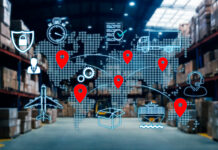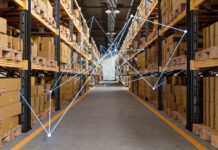
Modern logistics professionals face the challenge of optimizing operations, reducing costs, and meeting customer demands while contending with complexities like global distribution networks and rapidly changing market conditions. To address these challenges, logistics professionals are increasingly turning to innovative technologies, and one such game-changer is Digital Twin technology.
Digital Twins are virtual replicas of physical logistics systems, offering logistics professionals a powerful tool to enhance their decision-making, improve operational efficiency, and streamline supply chain processes. In this article, I’m going to explore how logistics professionals can harness the potential of Digital Twin technology to transform their roles and elevate the performance of their organizations.
Understanding Digital Twin Technology
A Digital Twin is a virtual representation of a physical object or system. In logistics, a Digital Twin replicates the entire supply chain, including warehouses, transportation vehicles, and distribution centers. This virtual replica is not merely a static model but an interactive, real-time simulation that mirrors the actual logistics processes.

5 Benefits of Digital Twin Technology in Logistics
- Enhanced Visibility: Digital Twins provide end-to-end visibility across the supply chain. Businesses can monitor the real-time status of shipments, track inventory levels, and identify potential bottlenecks or disruptions.
- Predictive Analytics: By collecting and analyzing data from various sources, Digital Twins enable predictive analytics. Companies can anticipate issues, such as delivery delays or stockouts, and take proactive measures to mitigate them.
- Optimized Operations: With Digital Twins, logistics operations can be fine-tuned for maximum efficiency. Route planning, inventory management, and resource allocation can all be optimized to reduce costs and improve overall performance.
- Real-time Decision-Making: Decisions in logistics often need to be made quickly. Digital Twins provide decision-makers with real-time insights, allowing them to respond rapidly to changing circumstances and make informed choices.
- Resource Efficiency: By simulating logistics processes, businesses can identify underutilized resources, such as transportation vehicles or warehouse space. This leads to better resource allocation and reduced waste.
Utilizing Digital Twin Technology Effectively: 7 Actionable Ideas
Now that we understand the advantages, let’s delve into how businesses can effectively utilize Digital Twin technology in logistics:
1. Data Integration
Begin by integrating data from various sources into the Digital Twin model. This includes data from IoT sensors, GPS trackers, RFID tags, and internal systems such as inventory management software. The more comprehensive the data, the more accurate the Digital Twin.
2. Real-time Monitoring
Use the Digital Twin to monitor logistics operations in real-time. Track the movement of goods, monitor temperature-sensitive shipments, and keep an eye on vehicle maintenance schedules.
3. Predictive Analytics
Leverage the predictive capabilities of Digital Twins to foresee potential issues. For example, if the model predicts a delay due to adverse weather conditions, alternative routes or contingency plans can be activated.
4. Scenario Testing
Digital Twins allow you to simulate various scenarios. Test the impact of changes in demand, disruptions in the supply chain, or alterations to your logistics network. This helps in devising contingency plans and optimizing processes.
5. Collaboration
Digital Twin technology is most effective when it’s a collaborative effort. Encourage different stakeholders, such as logistics managers, suppliers, and carriers, to interact with the model and provide input.
6. Continuous Improvement
Treat the Digital Twin as a dynamic tool for continuous improvement. Regularly update it with new data and insights, and use it to fine-tune logistics strategies over time.
7. Employee Training
Train your logistics teams to work with the Digital Twin effectively. Ensure they understand how to interpret the data and use it to make informed decisions.
Real-world Examples
Let’s look at a few real-world examples of how companies are utilizing Digital Twin technology in logistics:
DHL employs Digital Twins to optimize its warehouse operations. By creating a virtual replica of their warehouses, they can test different layouts and automation strategies to improve efficiency.
Rolls-Royce uses Digital Twins for predictive maintenance of aircraft engines. The technology allows them to monitor the health of engines in real-time and predict when maintenance is required, reducing downtime.
The Port of Rotterdam, one of the world’s largest ports, utilizes Digital Twins to optimize container handling and logistics. The virtual model helps in better resource allocation and congestion management.
Unlock Logistics Potential With Digital Twins
Digital Twin technology is transforming the logistics industry by providing comprehensive visibility, predictive capabilities, and opportunities for optimization. Businesses that embrace Digital Twins can enhance their logistics operations, reduce costs, and deliver better service to customers. As logistics continues to evolve in an increasingly interconnected world, Digital Twin technology will play a crucial role in staying competitive and efficient.




